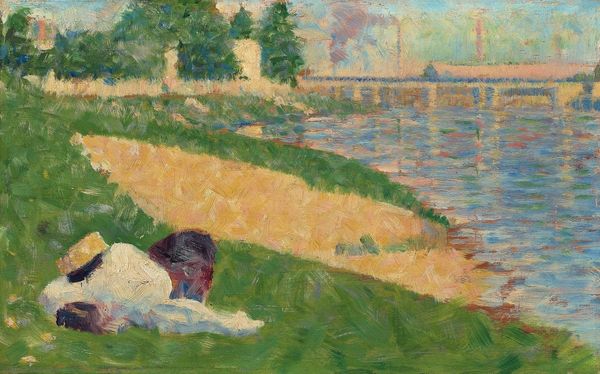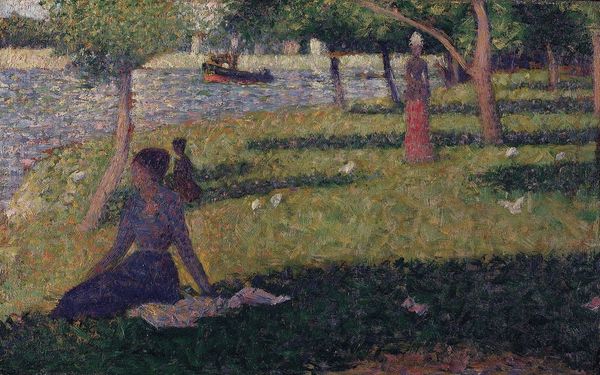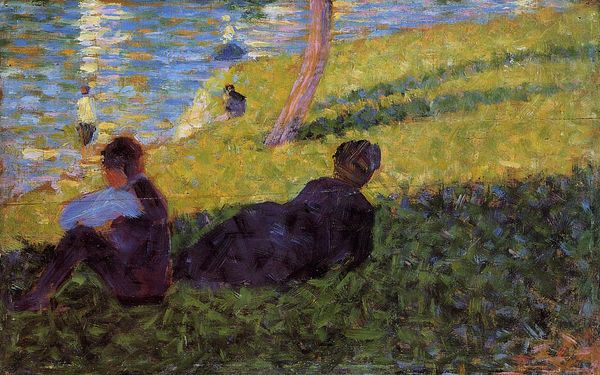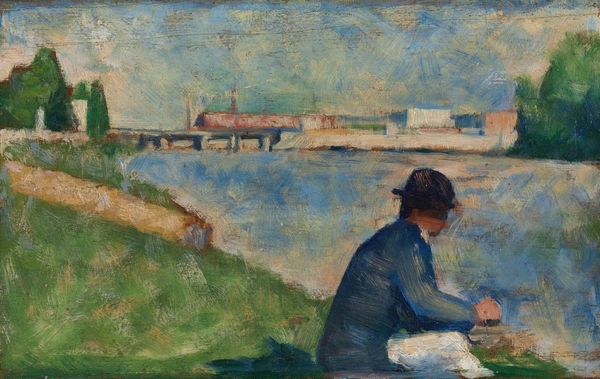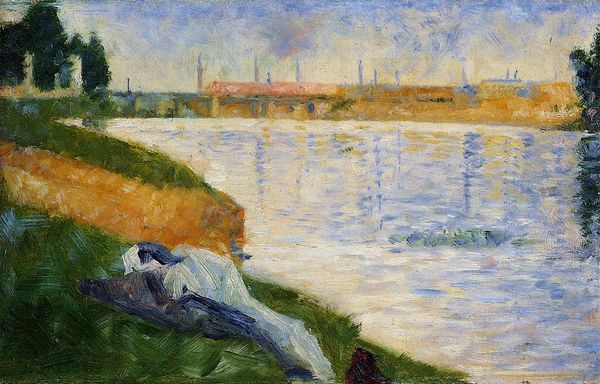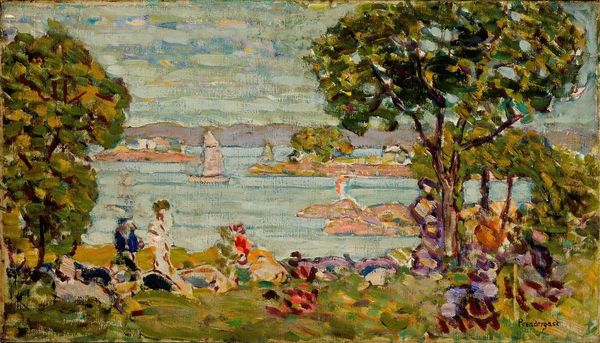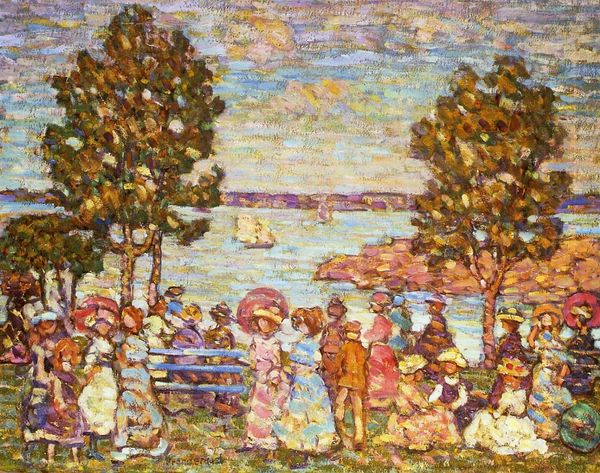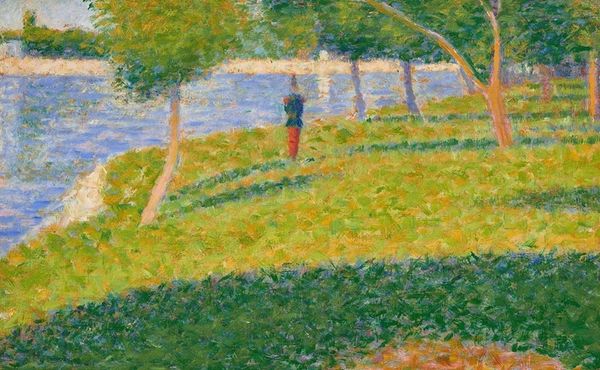
Copyright: Public domain
Georges Seurat created 'Seated Bather' with oil on canvas in France, during the 1880s. At first glance, this landscape depicting figures relaxing by the Seine seems like an ordinary scene of leisure. Look closer, however, and the painting embodies many contradictions of its time. Seurat's pointillist technique—small, distinct dots of color—creates a shimmering effect. The composition is deliberately structured, yet the subject matter breaks with academic tradition. Instead of a historical or mythological scene, we see working-class Parisians enjoying a public space. This reflects a shift in French society, with the rise of industrialization and new social classes. Art institutions were also evolving, with artists seeking new ways to represent modern life. Seurat's painting doesn’t overtly critique the status quo but by depicting the leisure of working-class figures it subtly challenges existing social norms within the artistic sphere. To fully appreciate this work, consider the broader context: research the socio-economic conditions of 19th-century Paris, and the development of modern art institutions.
Comments
No comments
Be the first to comment and join the conversation on the ultimate creative platform.


